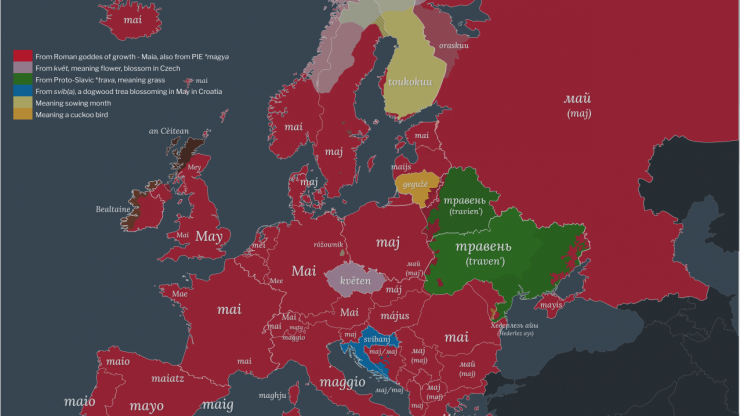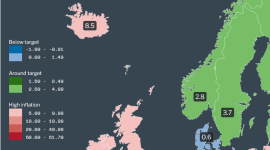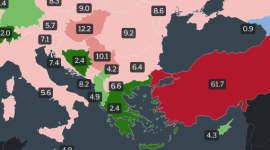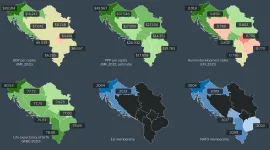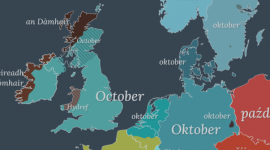It’s the first day of May. In most European countries, it is called Labor Day, sometimes called May Day.
As we enter the final whole month of spring today, what better moment to learn how to write the word “May” in different languages.
Two maps also show how May is written in different languages and European countries. The first map is organized by the common word origin. It is more geared toward the etymology of the word itself.
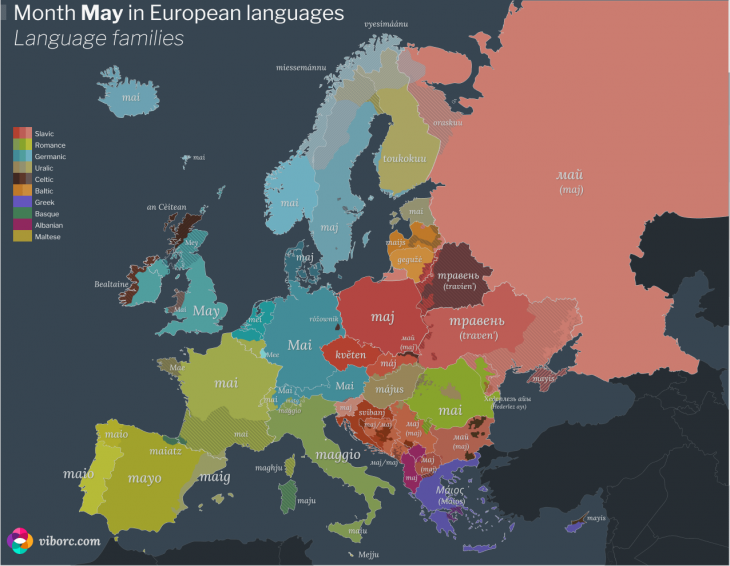
The second one shows May in different languages but organized and colored based on the language families and languages themselves.
Slavic, Germanic, and Romance languages
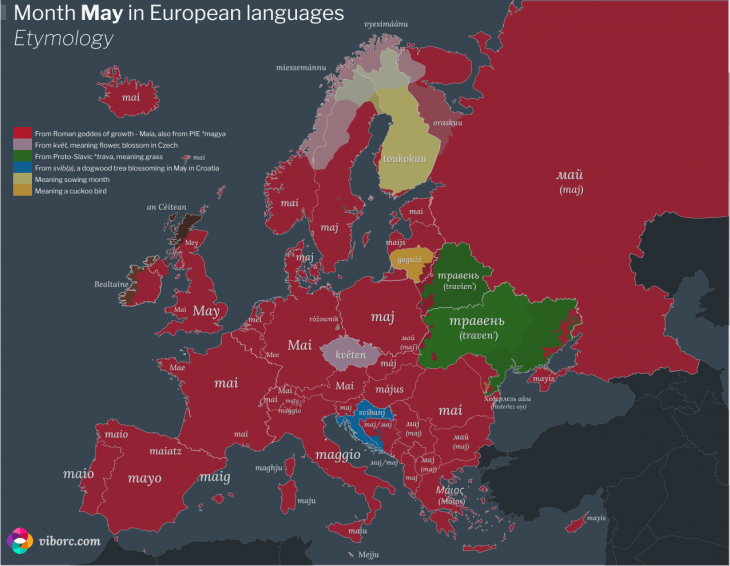
The Latin origin of the word May
By far, most European languages use some variant of the word May itself. From Mai in German, maj in Polish, mai in French, and even Mejju in Maltese – the roots are the same. It is related to the Roman goddess Maia. She was a goddess of growth, and even her name derives from the Latin word maior, meaning larger, greater, and bigger.
If we take one more step back, we can trace the origins to the Proto-Indo-European word *magya. Again, the meaning is the same – the one who is big, large, great.
What would make our ancestors use this word in the first place? We can assume that seeing all the nature in full bloom and growing; it probably made sense for them to assign attributes such are growth, increase, and richness to this time of the year.
Some indirect proofs for something like this may come from several Slavic languages where natural occurrences are used to describe months.
The Calendar of Romulus
In the original Calendar of Romulus, May was the third month of the year, called Mensis Maius.
| English name | Meaning | Latin Name |
|---|---|---|
| 1. March | Month of Mars | Mensis Martius |
| 2. April | Month of Aphrodite | Mensis Aprilis |
| 3. May | Month of Maia | Mensis Maius |
| 4. June | Month of Juno | Mensis Iunius |
| 5. July | Fifth month | Mensis Quintilis |
| 6. August | Sixth month | Mensis Sextilis |
| 7. September | Seventh month | Mensis September |
| 8. October | Eight month | Mensis October |
| 9. November | Ninth month | Mensis November |
| 10. December | Tenth month | Mensis December |
Croatian language – or how the climate affects word-forming
For example, in Belarus and Ukraine, May is called травень (travien’) and травень (traven’). This comes directly from the Slavic word for grass – trava.
Somewhat similar to this logic, in the Czech language, May is květen – meaning flower or blossom. Again, depicting a natural occurrence in this period of the year.
Croatians call May svibanj. It comes from the word svib or sviba. That’s a common dogwood (Cornus sanguinea), and it is flowering during May in Croatia. But Croatians also have a month deriving its meaning from the grass – travanj.
So, while travanj is Croatian for April, similar month names in Ukrainian and Belarusian are used for May. Croatia typically sees new grass growth earlier than its northern and eastern Slavic friends – being further south than Belarus and Ukraine and enjoying the much warmer and milder climate. There are more situations like this between Croatian and several other Slavic languages, which will be covered in some future posts.
Lithuanian, Finnish, Karelian and the Sami languages
Lithuanians use the word gegužė for May. It means a cuckoo bird. Again, a common natural occurrence in nature, with May being the month when the cuckoo sound is heard across the country.
Far up north, in Finland, May is the sowing month. And that is precisely what toukokuu means. Touko stands for sowing, and kuu stands for month. And neighboring Karelian oraskuu is similar and means the sprouting month.
Sami peoples inhabit large parts of Scandinavia and speak several languages, often called the Sami languages. In one of them, the Northern Sami, May is called miessemánnu. It means the month of a reindeer calf. And May is the month when reindeer are bringing their calf to this world.
Celtic languages and festivities
The Celtic languages Irish and Scottish Gaelic have common origins. Irish Bealtaine and Scottish Gaelic, an Cèitean, relate to a Celts Beltane festival – one of the 4 Gaelic seasonal festivals (together with Samhain, Imbolc, and Lughnasadh). It is also known as Cétshamhain (“first of summer”), and it marked the beginning of summer and when the cattle were driven out to green new summer pastures.
Whether it is May, Mai, svibanj, Bealtaine, or toukokuu, enjoy May, celebrate Labor Day, and enjoy good weather. And, don’t forget to stay safe and healthy!
Or, you want to learn and see to write word snow in different languages?
ABOUT THE AUTHOR
